IAM
A nozzle for every spray job
When choosing nozzle type and size, it is important to balance the need for optimal biological effect with considerations such as wind drift, sprayer capacity and forward speed.
Small droplets from STANDARD FLATFAN nozzles may offer an unsurpassed liquid distribution and effective coverage of the target surface. HARDI TWIN sprayers can safely use these small standards nozzles even when weather conditions are not optimal.
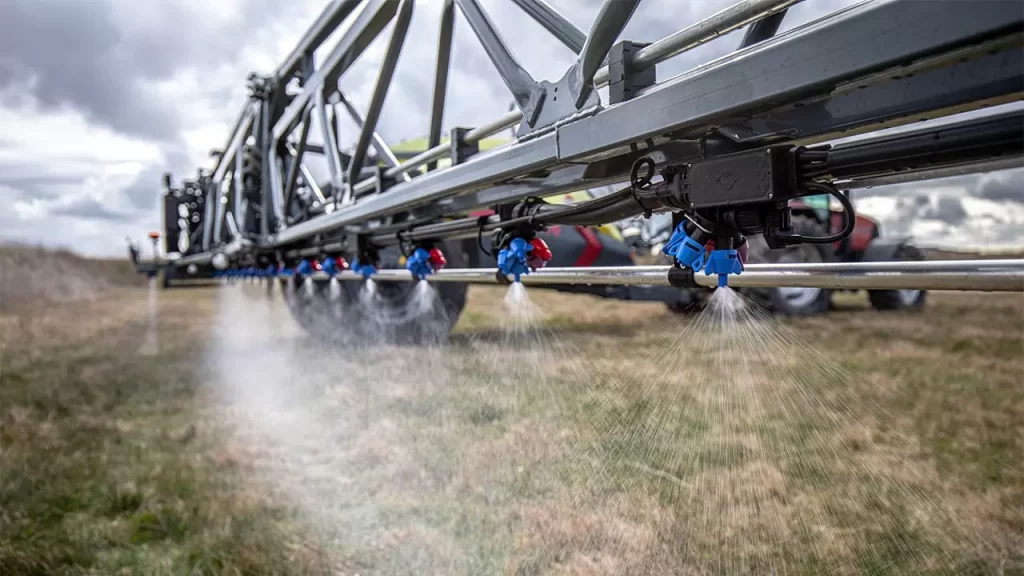
The reduced number of very small droplets produced by LOW DRIFT nozzles makes them less sensitive to wind. Therefore, they can be used on conventional sprayers under sub-optimal conditions. In particular, they are popularly used when spraying lower water volumes.
MINIDRIFT and INJET nozzles mix air with the spray liquid to coarsen the atomisation. Drift is substantially reduced with these nozzles so that field delays – through too high wind speeds – are minimised and timing is improved. The biological advantage gained through this better field timing may mask the use of coarser sprays. Their use has become critical to conventional spraying practice which has to try and meet both environmental needs without risking the effectiveness of the product to be applied.
Water volume rate has a big influence
Your working capacity will largely depend on the water volume rate. Why? Low volume rates mean that less filling time and transport are required. In fact, a volume rate reduction of 25% increases your capacity by more than 10%. A big difference even in the short term!
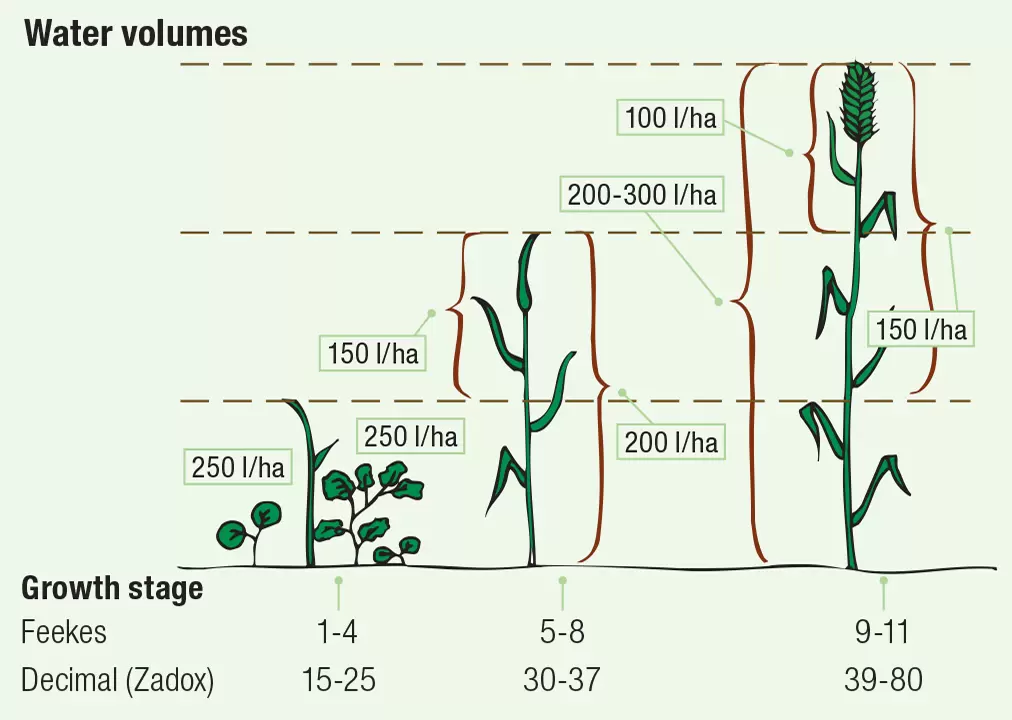
You do, however, need to pick the right nozzle and speed for the job. Lower spray pressure alone will mean that both coverage and deposit are reduced. Note that the application rate of a nozzle should be approximately +/-40% of the medium flow at 3.25 bar.
What about droplet size?
Droplet size is important, and your need will differ according to conditions and type of crop. HARDI nozzles followed BCPC/ASAE specifications with regard to droplet size classification, today the ISO 25358 takes over, there are now more classes. The data in this document is correct towards the new standard.
There are 7 size classifications but for most types of farming only “fine”, “medium”, “coarse” and “very coarse” had been relevant. Today also the XC and UC classes are important in relation to drift reduction and spraying in buffer zones. The challenge is that no nozzle will give you all spraying options and that is why you sometimes have to compromise.
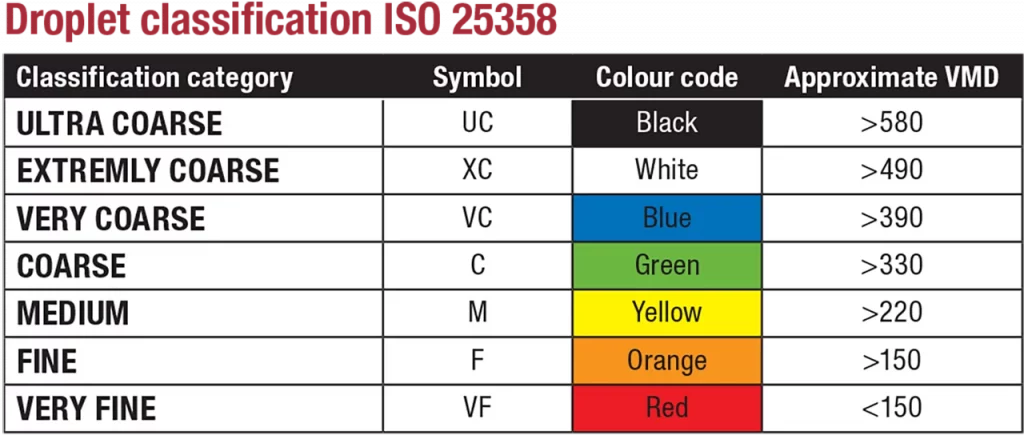
The VMD data is belonging to the used measuring equipment. The VMD data is only an estimate. The borders between the different categories are defined by a certain nozzle which is standardized in ISO 25358. HARDI will only give the categories as the VMD as a single measurement is not useful for farmers as a decision tool. On the nozzle flow tables in this product guide is a separate column to indicate the spray quality.
Make sure you have drift-reduction nozzles
The new directive from the EU states that a sprayer must be equipped with drift-reduction nozzles. So if you have not already considered a MINIDRIFT nozzle, maybe now is the time. Standard equipment on a sprayer will soon be required anyway. Drift reduction nozzles work with very coarse droplets; this is the only way to reach a high drift reduction level.
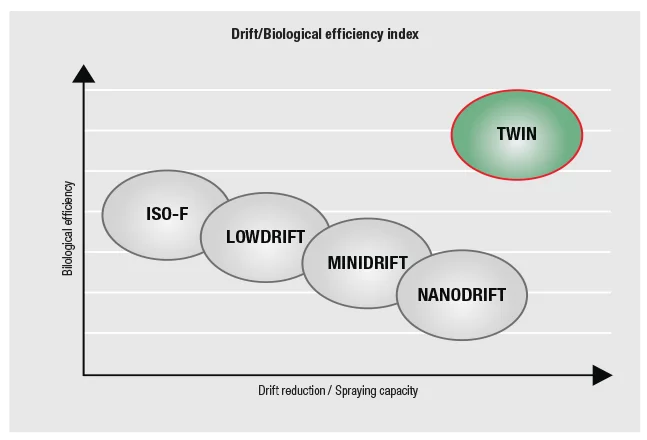
So, how do you select the right Nozzles?
The tables below can be used when choosing the right nozzle for a spray job. Important preconditions for the tables are as follows:
- Always follow label recommendations for spray quality and volume rate – if nothing is stated, the tables below can be used as a guideline.
- To minimise wind drift and maintain even liquid distribution, spraying pressure between 1.5 and 2.5 bar is recommended (NANODRIFT: 3 to 5 bar). Higher pressures with TWIN air assistance are also acceptable.
- Spraying against grass weeds or on other vertical targets – it is important to use a relatively fine spray for good coverage.
- Small dicot weeds need good coverage either through fine droplets or – if using a coarser spray – by compensating with a higher volume rate.
- Contact action mode needs finer droplets.
- Use medium sized droplets for chemicals that are transported in the plants
- For large dicot weeds – coarse atomisation can be used.
- Fungicide treatments are often less sensitive to spray quality; medium drops can be recommended. Remember that the volume rate must be adjusted to crop density and needs for penetration to more basal parts.
- Generally, the water rate for conventional spraying should not be less than 150 l/ha and for TWIN not less than 80- 100 l/ha for optimum efficacy at lower chemical doses.
- When mixing products or using products with more than one mode of action, adjust to the most demanding component of that product mix.
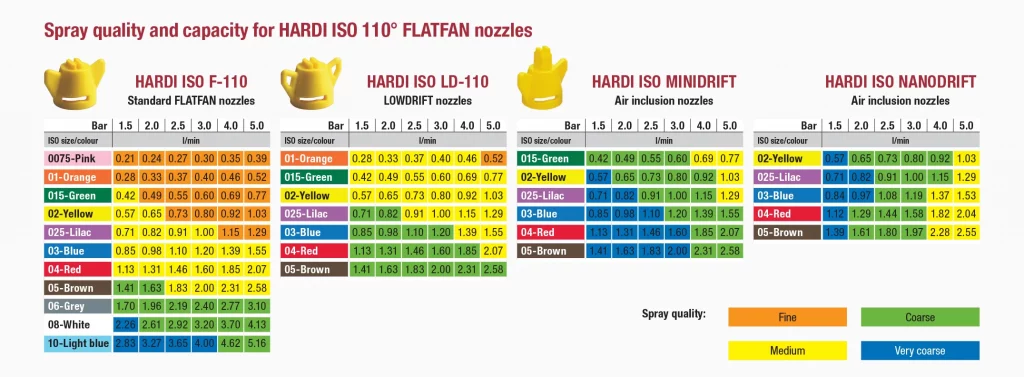
HARDI IS PART OF Exel Industries S.A
COPYRIGHT © 2022.
Why not check out our social media pages


